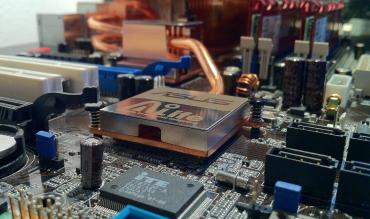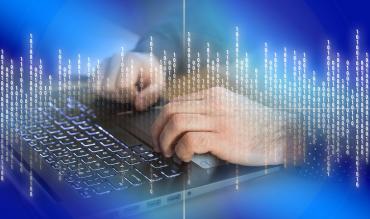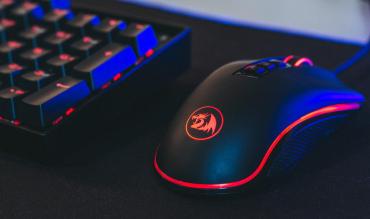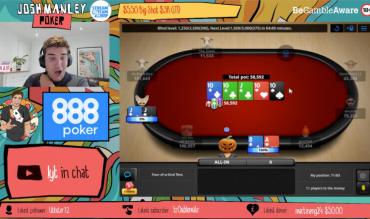With any activity, having the perfect tools can significantly increase the quality of our output. It’s no different with online poker. So, what does the ideal online poker system look like?
In truth, it depends. Poker players often use their computers in different ways, even if that system is dedicated solely to poker.
For example, mass multi-tablers using extra assistance tools will stress their system more than a single-tabler using no additional software.
In this guide, we’ll discuss the following –
Table of Contents
Minimum System Hardware Requirements
Let’s start with the absolute minimum recommended specification for any new system. Most online poker clients will run on systems with less power. But meeting the following recommendations should help to guarantee a smooth experience.
- Processor - Minimum quad-core 2.4Ghz or better.
- Storage - Minimum 1TB SSD storage. SATA or NVMe are fine but stay away from both regular and hybrid hard drives.
- RAM (memory) - 16GB RAM minimum.
- Graphics - Not too important. Avoid paying for a system with an expensive graphics card if you are on a budget. It won’t significantly impact overall performance, and the extra money could boost one of the above categories.
Hardware Requirements FAQs
Why so much storage?
The ideal storage amount depends quite heavily on the use case. It’s possible to play online poker using much less storage space. But if we inevitably start working with large hand history databases or solver files, we’ll be thankful for the extra space.
We could easily outgrow 1TB of space if we are avid students of the game. The good news is that upgrading the storage later is relatively straightforward.

What do SSD, ‘regular drive’, SATA, and NVMe mean?
Earlier storage drives used spinning disks. Some systems still ship with this type of drive even today. ‘Regular’ storage drives like these are slow and prone to breaking easily.
SSD stands for ‘solid-state drive’ and refers to drive technology that doesn’t have moving parts. SSDs are much faster than regular hard drives and excellent for working with large hand history databases.
SATA and NVMe refer to how the hard drives connect to the computer. For example, regular hard drives and SSDs can be connected via SATA.
NVMe SSD drives are significantly faster than SATA SSDs. But it won’t result in a significant performance difference for most poker software. Of course, if the price is similar, we should choose an NVMe SSD over a SATA SSD.
What is a ‘hybrid’ hard drive?
These drives are cheaper than SSDs because they use a mixture of regular (spinning disk) and solid-state storage. Although they provide a noticeable speed improvement over standard drives, it’s recommended that poker players use a full SSD.
Hybrid drives can be an excellent choice for storing lots of files cheaply. But they might not give poker players the performance they want for their main drive.
What exactly is RAM anyway?
RAM (Random Access Memory) is a high-speed memory that our system stores only while switched on. It’s useful for running multiple programs at once without lag. It also speeds up the processing of large amounts of data.
For example, it can more efficiently solve a specific game tree or run population analysis on an extensive database of poker hands.
What exactly are the processor and cores?
In some ways, the processor or ‘CPU’ is the computer. It’s the central brain that controls all other processes. A considerable amount of the computer’s speed will directly link to the processor’s power.
Most modern-day processors are split into several smaller processors referred to as cores. For example, a quad-core processor has four cores, while a hexa-core processor has six cores.
Theoretically, if we double the number of cores, we double the overall speed of the processor. In practice, it doesn’t always work like this since not all software can efficiently take advantage of multiple cores.
Selecting an Operating System

Apple systems are becoming ultra-powerful in the modern world. Does this mean that they should be the default choice for poker players?
In short, no, probably not. A lot of essential poker software will only run on a Windows machine. So, a Windows machine is the default recommended option.
But there are poker players who still use macOS. Perhaps they have been using macOS their whole life and can’t envision ever switching to a Windows machine. It’s undoubtedly possible to get by.
But we’ll inevitably hit a roadblock where we can’t run a piece of poker software that a Windows user can.
It used to be possible to dual boot an Apple system to run both Windows and macOS (and it’s still possible with the older Apple systems). The new M1 chip makes this a little pipe dream since it uses what is known as ‘ARM’ architecture.
It will only run an ARM version of windows, and a lot of poker software doesn’t work on Windows ARM.
Monitors
It’s extremely common for poker players to use multiple monitors as part of their setup.
It’s not mandatory, but multiple monitors can afford some advantages. It’s possible to play an increased number of tables while displaying other tools such as tracking software or the poker client lobby.
The crucial misunderstanding players have, when considering their monitor setups, is the difference between screen size and screen resolution.
Put simply, large screen size does not guarantee the ability to place more items on the screen. The screen resolution determines how many items can fit.
- Screen size: How big is the screen physically? Usually, it’s a measurement in inches of the diagonal length between the screen's bottom-left and top-right corners.
- Screen resolution: How many pixels the screen is capable of displaying. Two of the most common are 1920 x 1080 pixels (referred to as ‘1080p’) and 3840 x 2160 pixels (referred to as ‘4k’).
It’s possible to have reasonably large screens (larger than 30 inches) with 1080p resolutions and relatively small screens (21 inches) with 4k resolutions.
We might assume that we could fit more tables on the larger monitor. But we’d be wrong in this case.
This concept can be very confusing at first. It helps if we understand that poker tables usually have a minimum width in terms of pixels.

Say a poker client offers tables with a minimum width of 600 pixels.
We’ll only be able to fit three tables side by side on a 1920 * 1080 screen, regardless of the size of the monitor in inches. If we try to make the tables smaller, the poker software simply won’t allow it.
21-inches for a 4k screen is likely not practical (even though there are plenty for sale!). If we max out the number of tables such a monitor could hold, the tables will likely be too small for us to see comfortably.
As a rough guide, a 4k screen needs to be at least 27 inches to get the maximum benefit from the high resolution. Next time you see a company boasting that their 13-inch laptop offers a 4k screen, remember that this has arguably zero tangible benefit to the customer. Also, it’s likely to cause the laptop battery to drain faster.
4k monitors are nearly always more expensive than the regular 1080p monitors. Some players might prefer to have one huge 4k monitor instead of several 1080p monitors, which is fine.
The point is to choose whichever setup we prefer but understand our options clearly.
Input Devices
There is more than one way of controlling the poker action.
The classic method is using a single mouse. But many professional players like to use a mixture of a mouse and keyboard hotkeys. (We distribute stress across both hands this way. It allows us to maximise the length of our playing time while lowering the risk of repetitive strain injuries.)
It’s possible to purchase a one-handed gamer’s keyboard, which saves desk space and is especially for using hotkeys. A regular keyboard can do the job just fine, however.
Whatever method of input we use (some players even use a gamepad), we want to invest in high-quality ergonomic devices.
We’ll likely be using our mouse for hours on end. So, it’s generally worth spending the extra cash on a high-quality mouse and mousepad.

Other Equipment
We should also carefully consider the following:#
- Chair - We need something comfortable and ergonomic. Any money we save now might not be worth the excruciating back pain further down the line.
- Desk - It’s possible to grind with our laptop perched precariously on the edge of a radiator somewhere. However, it’s better to purchase a good quality desk with plenty of space.
- Glasses - Some players use ergonomic gaming glasses that filter out harmful blue light from monitor screens. Keep in mind that our eyes should be roughly the same height as the top of the monitor in an ergonomic setup.
Internet Connection
Online poker doesn’t require a high-speed internet connection. What it does require is a reliable internet connection. (If cash is not an issue, most online poker players usually take the absolute fastest connection available in their area anyway).
It doesn’t take a lot of maths to figure out that disconnecting in a big pot can cost us more than our entire internet bill for the month (or even the year).
So, it makes sense to have a backup connection. In the modern age, it’s pretty straightforward to have an inexpensive backup connection in the form of a smartphone data signal.
If our primary connection drops during a big pot, we can simply connect to our smartphone hotspot and finish our poker hand.
Use Case - Working With Solvers
Some activities require significantly more power than the minimum recommended specs above.
- For example, working with poker solvers can be very RAM intensive.
- The game tree for the solve needs to be smaller than the available RAM on our computer system.
- This amount works fine for small game trees, which are typically less than 4GB.
Most postflop solves would be possible with the minimum 16GB RAM listed above.
But game trees that include preflop action can be enormous! Think 512GB for a small game tree but potentially 2TB (4 * 512GB) for a larger game tree.
It’s also possible to run postflop solves for Pot-Limit Omaha. The game trees are much larger than Hold’em as each player receives four cards preflop. A computer with large amounts of RAM would help to facilitate such postflop solves.
But these are relatively specialist use cases and don’t apply to the average poker player. If we were planning to use our system for running large game-tree solves, we’d likely already have an idea of the system specs.
Due to the hefty hardware requirements, this work is often run on a rented-cloud computer rather than on a locally-built system.
Use Case - Travelling
Portability is also a consideration. It’s not purely about spec here. Although getting a powerful desktop system for a reasonable price is easier, they are not ideal for travelling.
A high-end laptop can balance portability and power well and comfortably meet the minimum specs described above. You can also plug in external monitors, like a desktop system, to use at home.
If we rarely travel or prefer a complete break from poker when we do, we’ll usually get more bang for our buck with a desktop system. Desktops are also naturally better in terms of cooling/ventilation. So, they generally perform slightly better than a laptop of equivalent spec.
Putting it Together
It’s not uncommon to use a system for activities other than poker, such as gaming. Playing poker doesn’t typically involve 3D graphics. But, if we also want to use the system to game, we should look for a model that has a decent graphics card.
Similarly, a fast internet connection is not crucial for playing online poker. But, if we were also planning to use our system to stream online, we should go for a fast internet package.
Why not take a moment to list all the things you’d like to do with your setup?
Next, modify the minimum recommendations in this article accordingly to fit your requirements.


